The Green River layout is impressive. After all, at 33 x 44 feet, there’s a lot to be impressed with. Hilton Glavish, the owner of the layout, began modeling the Wyoming Division of the Union Pacific, from Echo Canyon to Green River in the 1950s, in 2012. “In 2008, I drove the road from Ogden to Green River and decided that this was a great part of the UP railroad to model after seeing firsthand the dramatic, scenic features of Castle Peak, Green River and Echo canyon. In 2011 I became a member of the Union Pacific Historical Society, primarily to obtain a copy of The Streamliner magazine, Vol. 14 No. 4, issued in the fall of 2001, which had a detailed article on Green River in the 1950’s.” From there, Hilton’s fate was sealed, and work began on the Green River layout the following year.
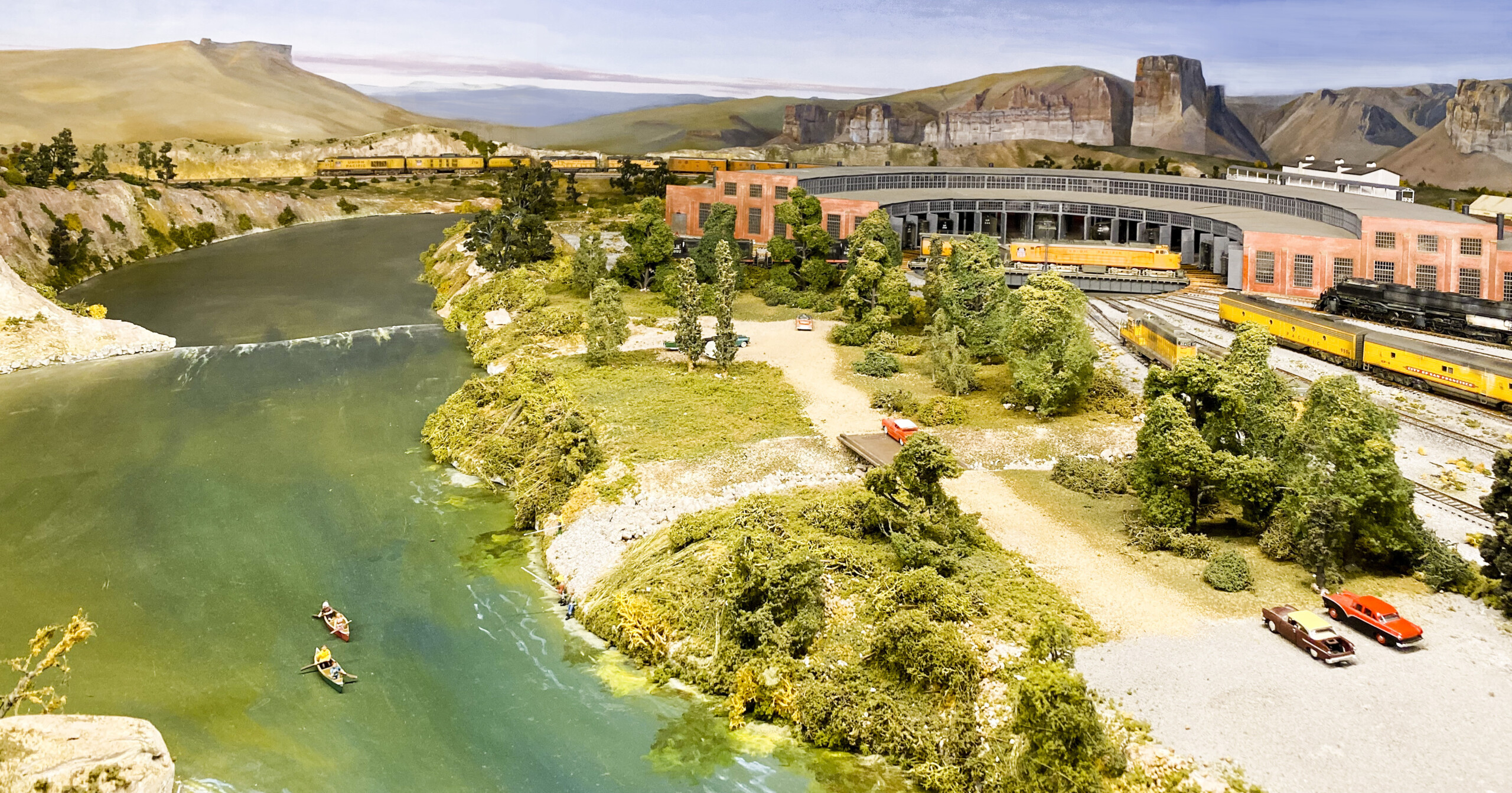
When I found the materials for this story sitting on my desk one morning, my eyes were immediately drawn to one aspect: the backdrop. The paintings, done by Don Britton, evoke, among other things, the classic westerns of John Ford, with sweeping perspective which captures the enormity of the desert landscape. “He (Don) took it upon himself to travel to Green River and take many photographs to capture firsthand the ambience and standout features of the scenery. Don has cleverly blended the backdrop painting and plaster work with noticeably good perspective and color matching.” These fiberboard panels measuring 30 inches tall and eight feet in length are mounted on brackets attached to the walls, which allow for their easy removal.
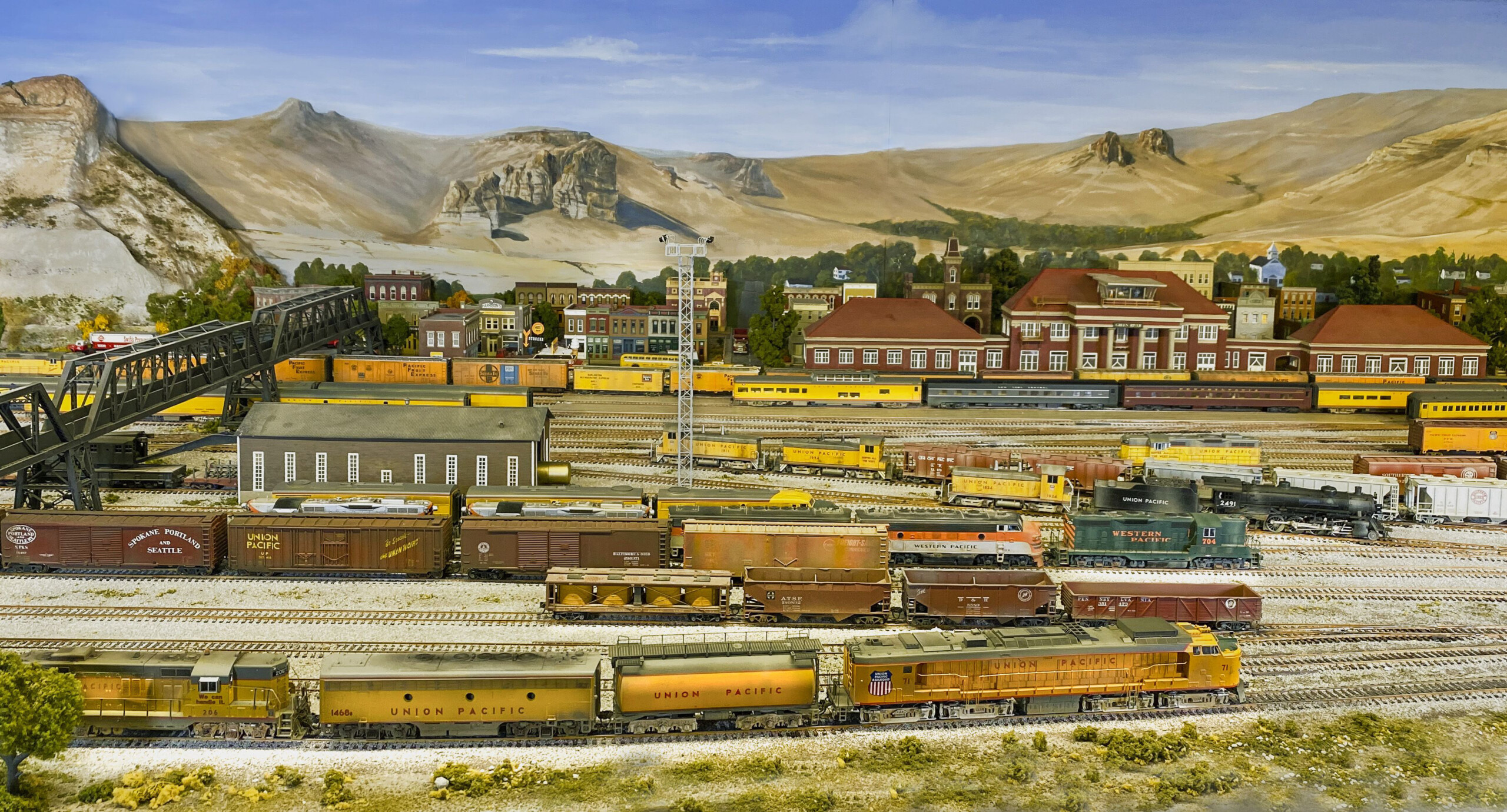
Even with the beautiful backdrops, Hilton’s favorite view of the layout remains what convinced him to model the region in the first place: “The most interesting aspect of the layout is exactly what captured my attention the first time I visited the prototype: namely, standing on the footbridge watching long trains wind their way through the Green River yard tracks, against the spectacular scenery of Castle Rock, the Green River Township and the river itself, as well as the somewhat barren but textured surrounding landscape.”
There’s more to this layout than just a pretty face, though. Hilton lists his strengths as “track work, overall layout design, detailed yard design and wiring and electronics” and the Green River layout makes these strengths evident.
“With regard to the trackwork, a minimum radius of 48 inches and no. 10 switches have been used to make these operations as realistic as possible by minimizing the transverse coupler displacement associated with the long passenger cars. The book ‘Track Planning for Realistic Operation’ written by John Armstrong was very helpful for hints and advice on this aspect of the layout.”
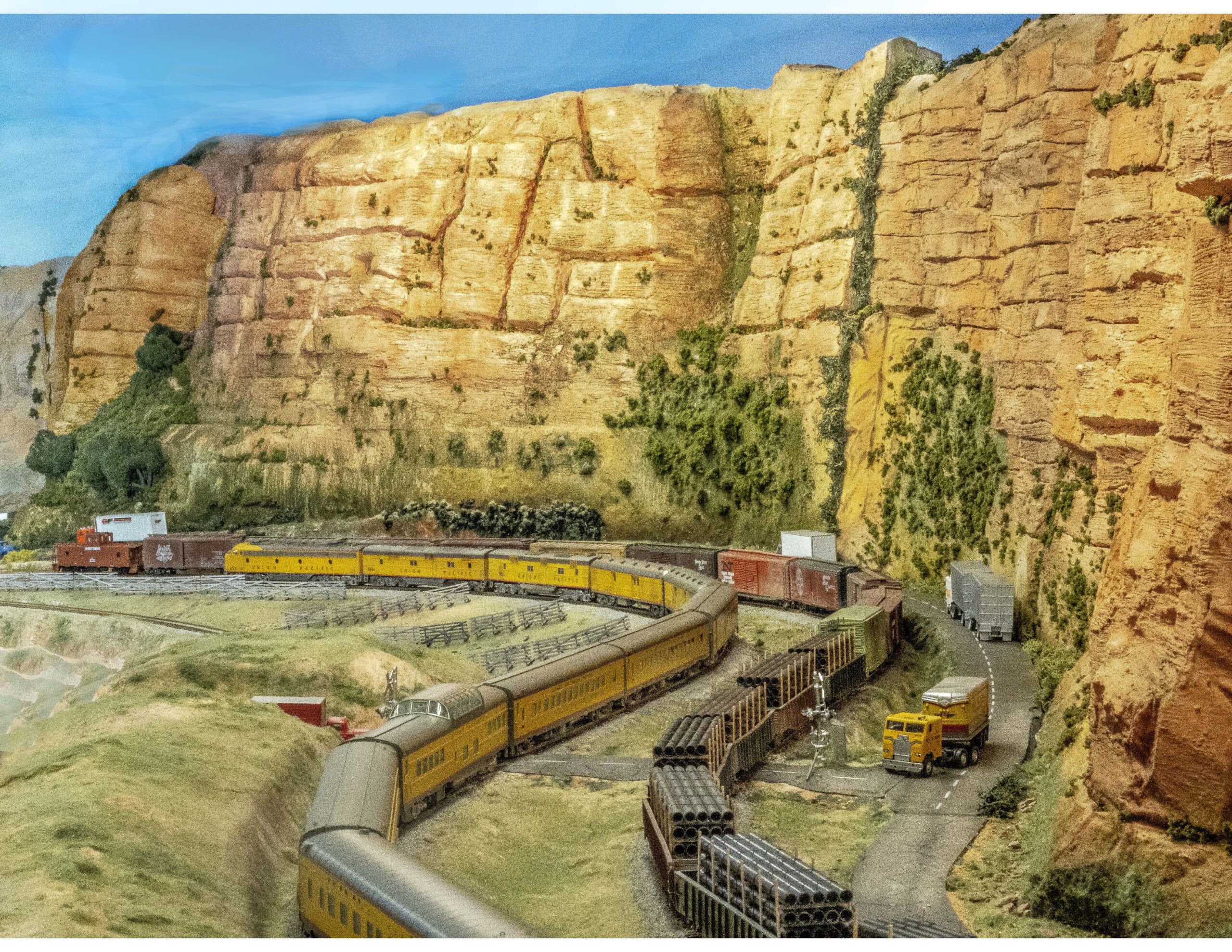
An important objective for Hilton was to implement “hands-off” uncoupling during switching operations. “I personally think that in a model, manual uncoupling of any sort detracts from operational realism. In the present layout, remote, hands-off uncoupling is implemented with the permanent magnet Kadee No. 308 uncouplers.” Kadee Whisker Couplers are used on the cars wherever possible to ensure the most reliable operation.
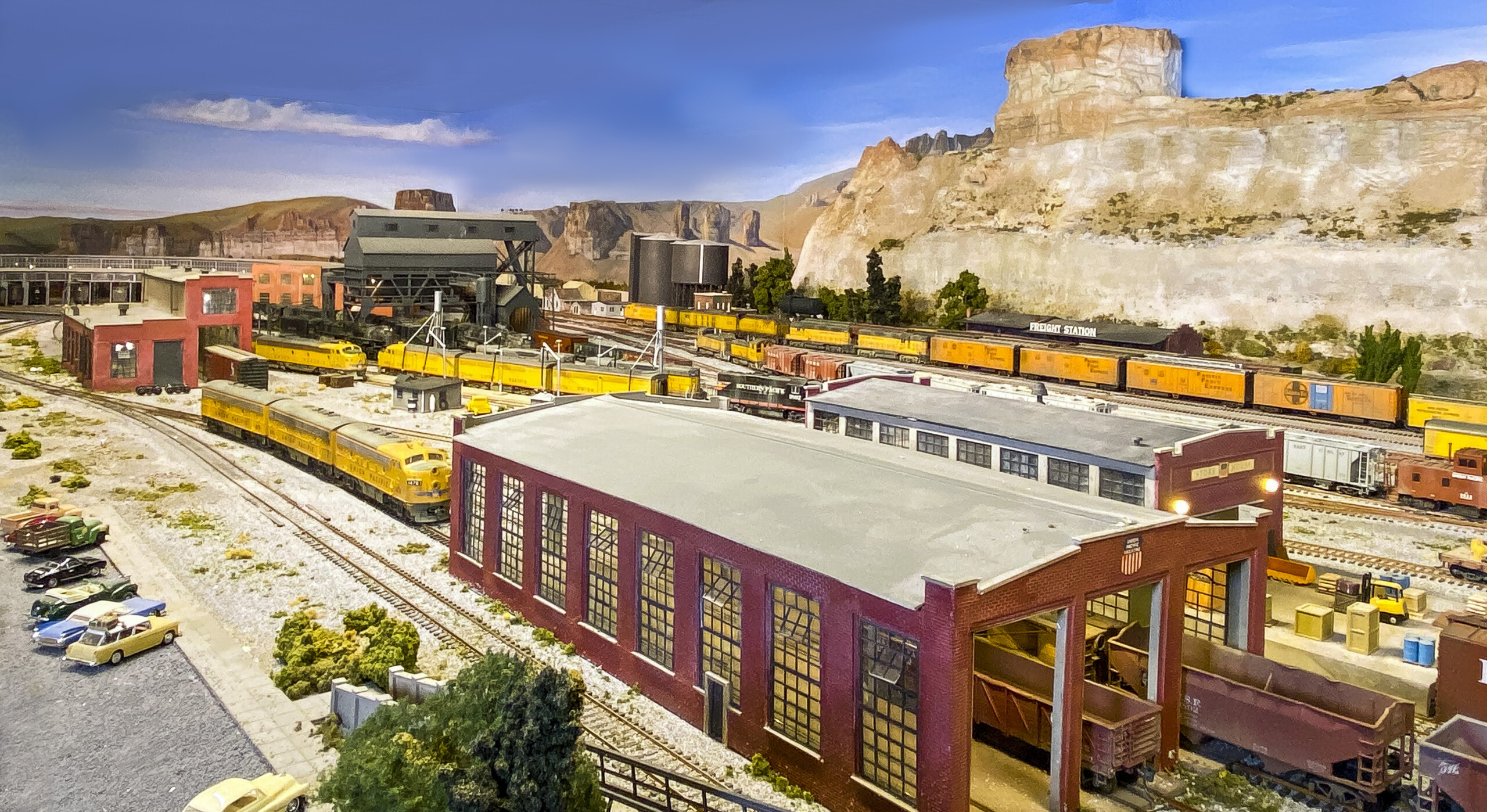
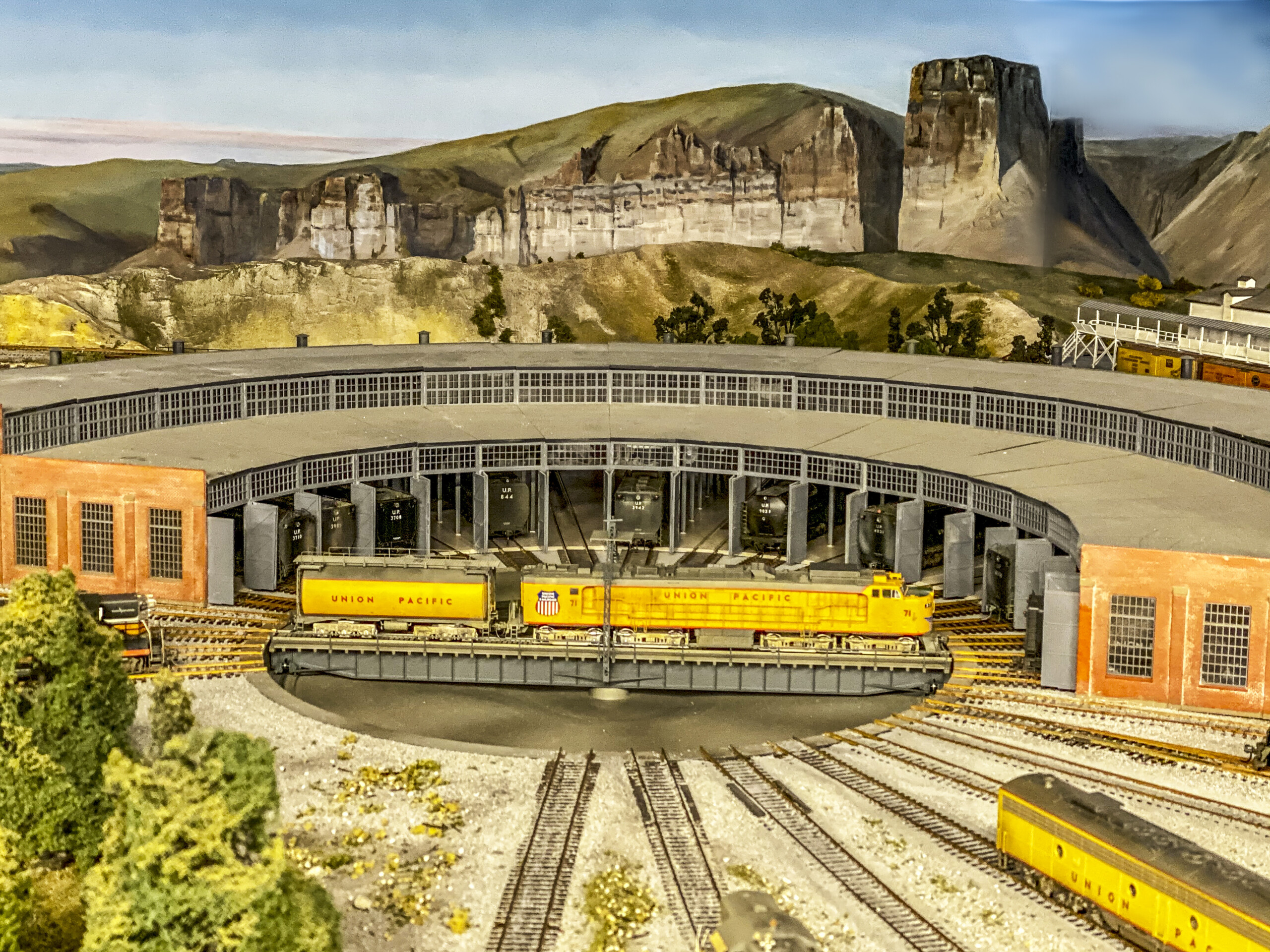
Due to size restrictions, the extensive Green River yard is used to make-up and breakdown trains. “I actually get a lot of satisfaction doing this using the remote switching and hands-off uncoupling designed into the layout. Once a train is made-up it can be sent to and stored in a number of different loops, namely – Cheyenne, Ogden, Portland and Park City, all hidden under the visible layout as each loop can hold up to two or three trains. A total of 8-12 trains can be stored and subsequently brought into an operating session as desired.”
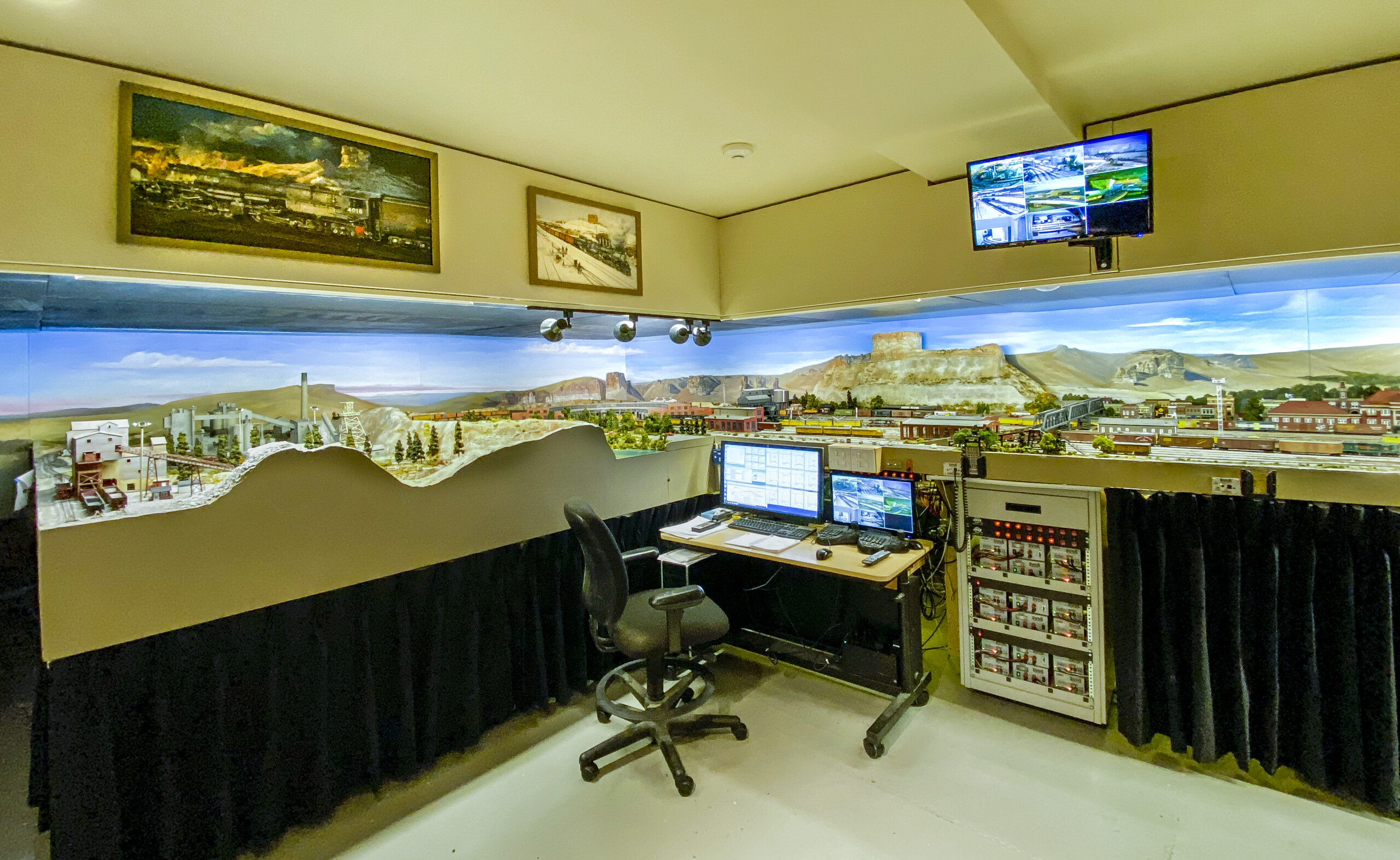
Five video cameras monitor the hidden loops under the visible layout, and two overhead direction-controlled video cameras are used to display the entire yard and associated industrial areas. With this setup, Hilton is able to operate many trains at once, averaging about 15 trains in a given operating session, which typically last for three hours. Five conductors can comfortably operate on this layout simultaneously.
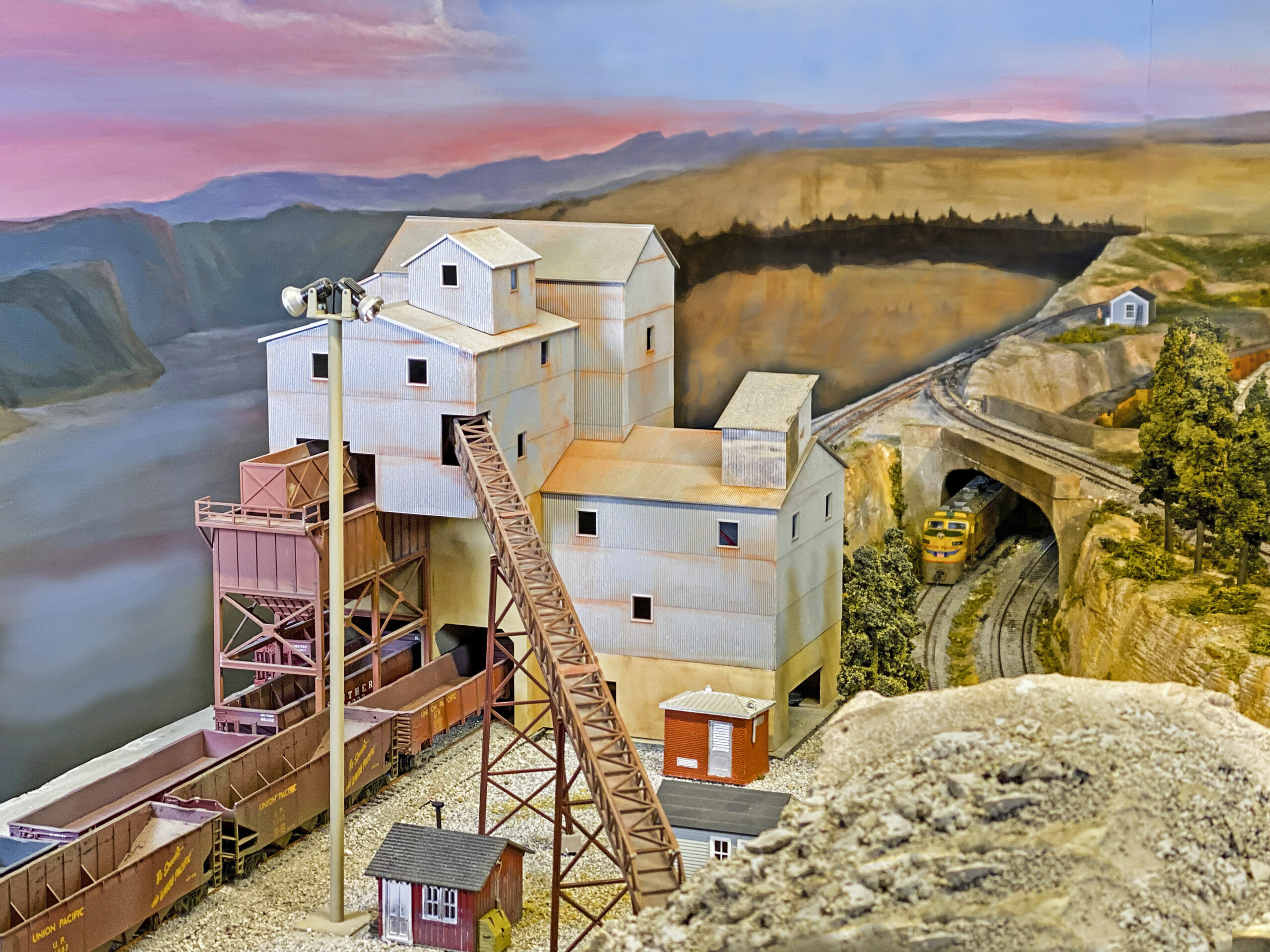
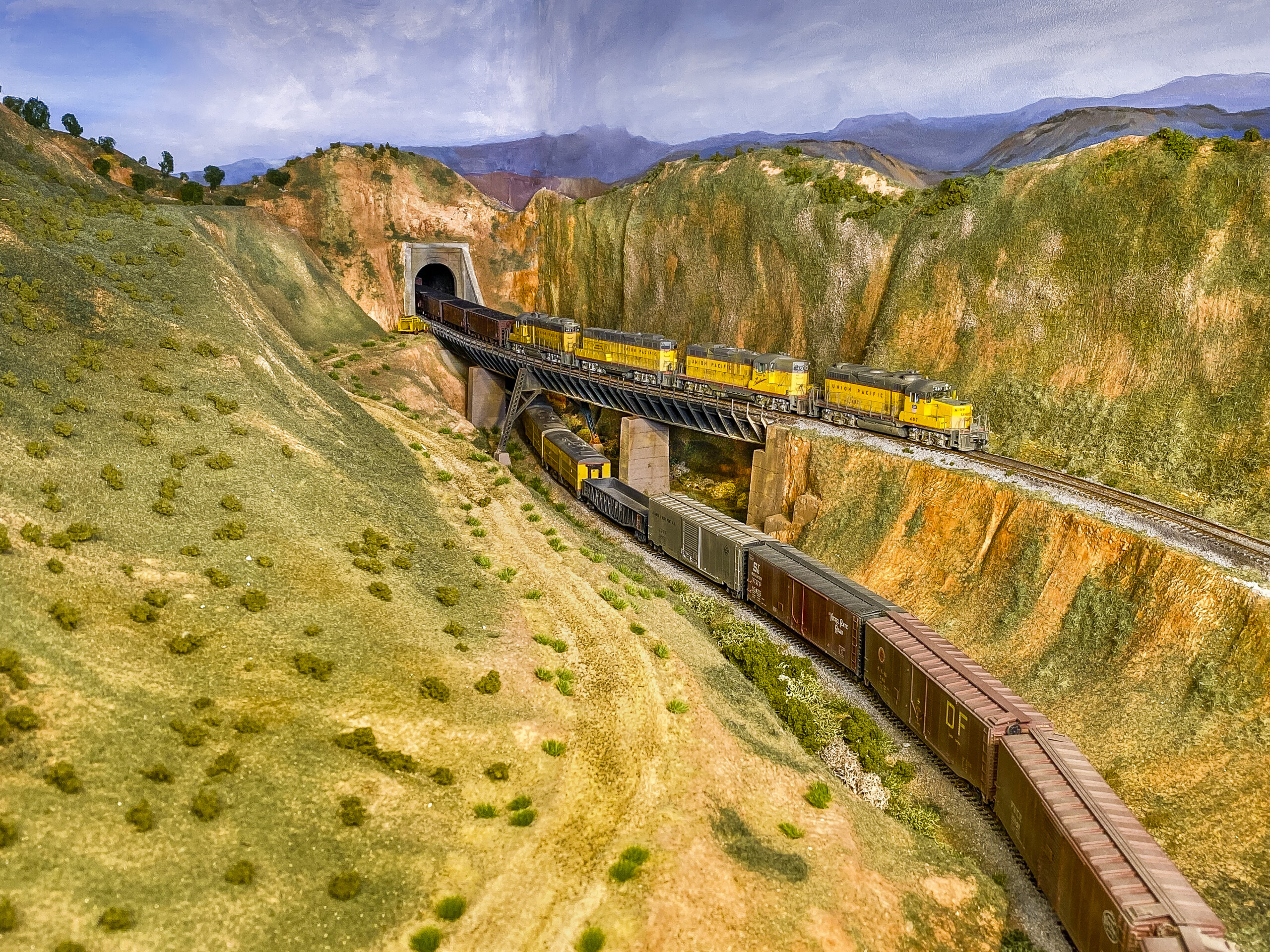
The Green River layout is an impressive effort in both scale and execution. Detail has not been spared to achieve a layout of this size, as the photos testify. This layout is both an aesthetic feat, and a pleasure to operate on. Still, would Hilton do anything different in hindsight? “(Green River) was several years in the making, and changes were made as it progressed. In general, I probably would not do anything differently.” I can see why, Hilton.
Hilton Glavish began modeling North American trains in mid-1970 after watching long freight trains slog their way up Donner Pass through the Sierra Nevada with his wife Barbara and their two children. He subsequently began work on the Green River layout in 2011. He still runs his own business, engaged in the design and manufacture of ion implanters used in the production of semiconductor chips and flat panel displays.





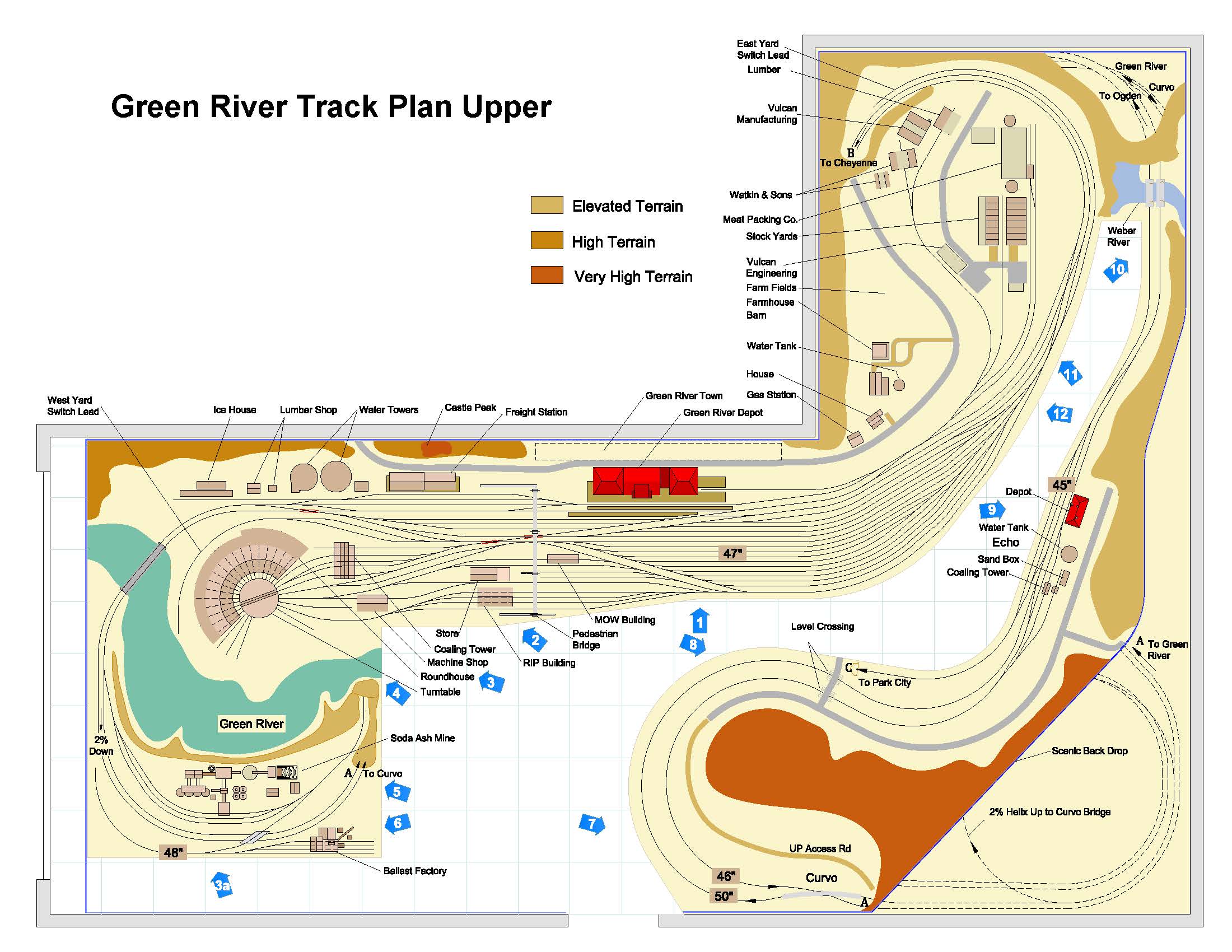
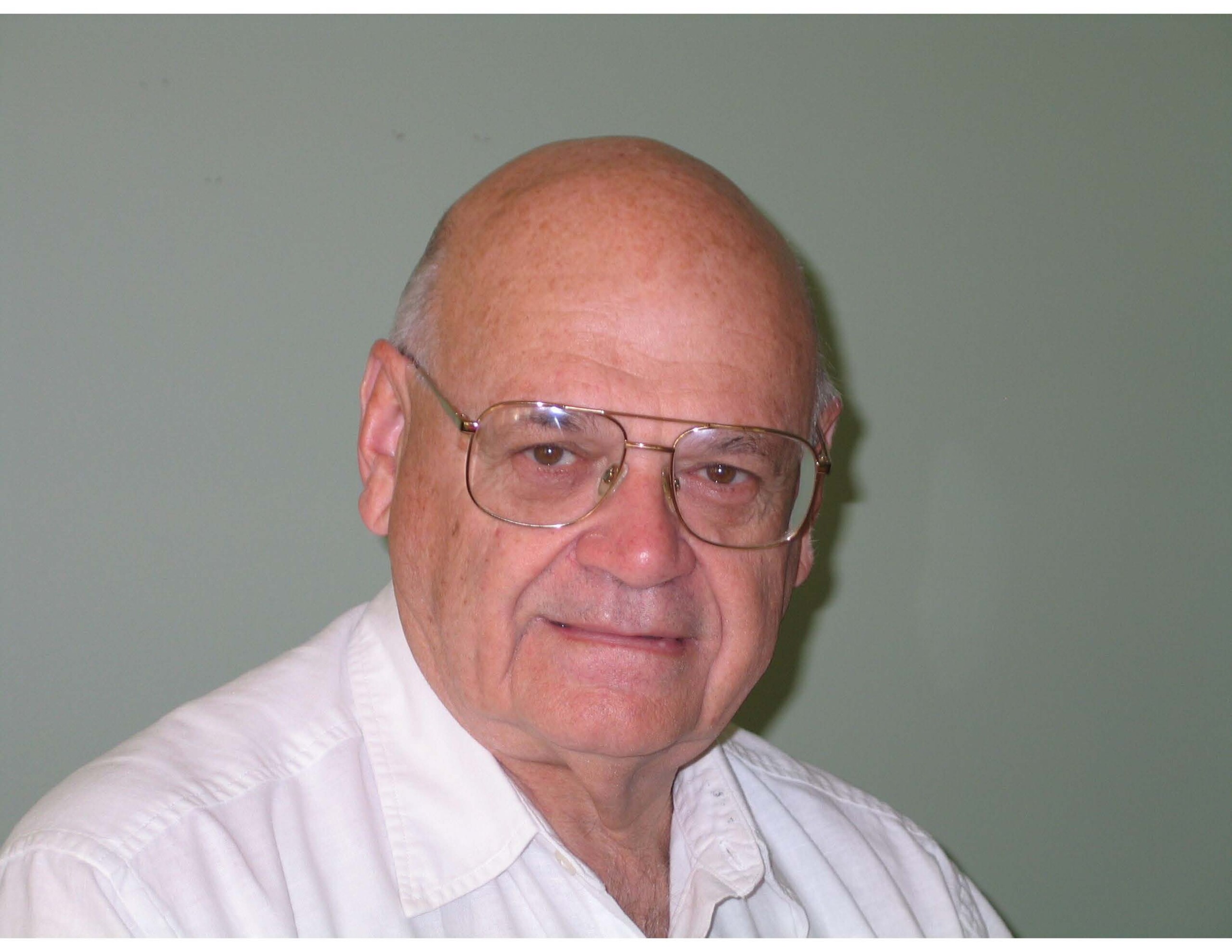

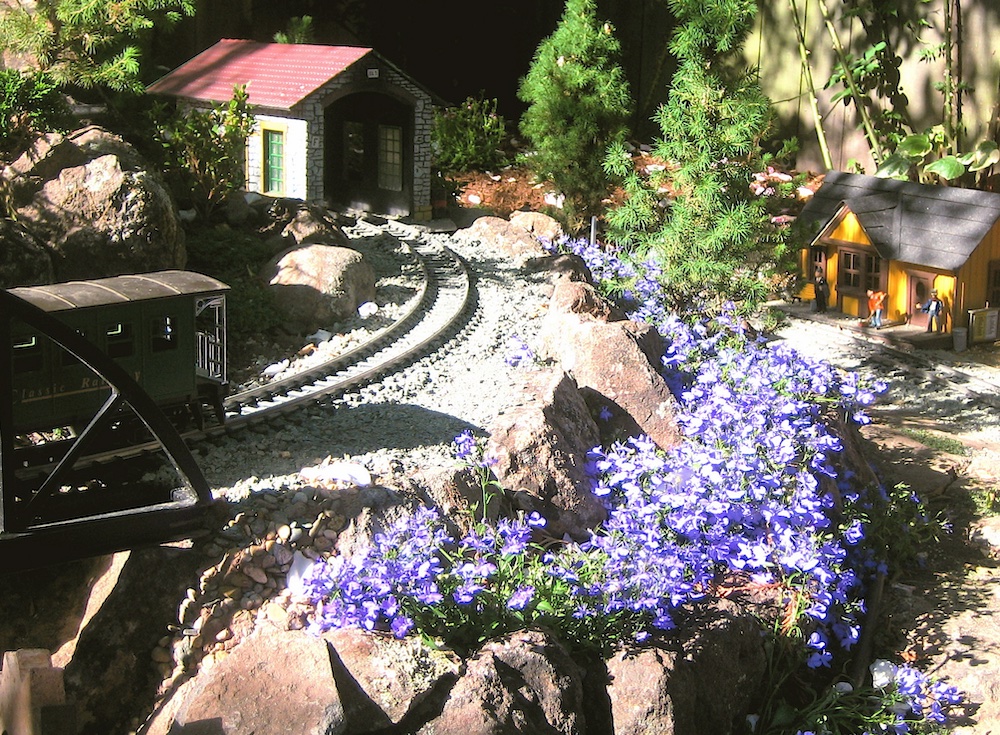

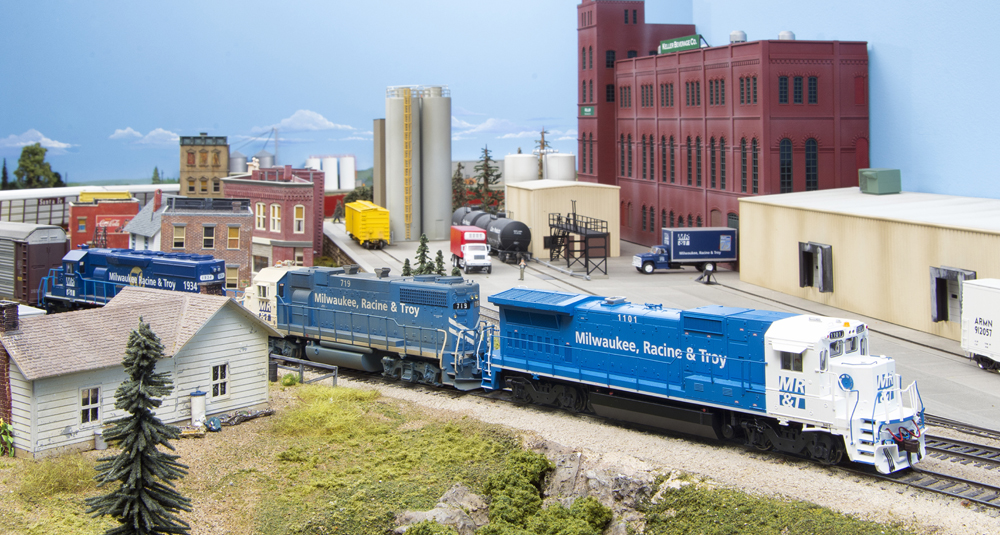
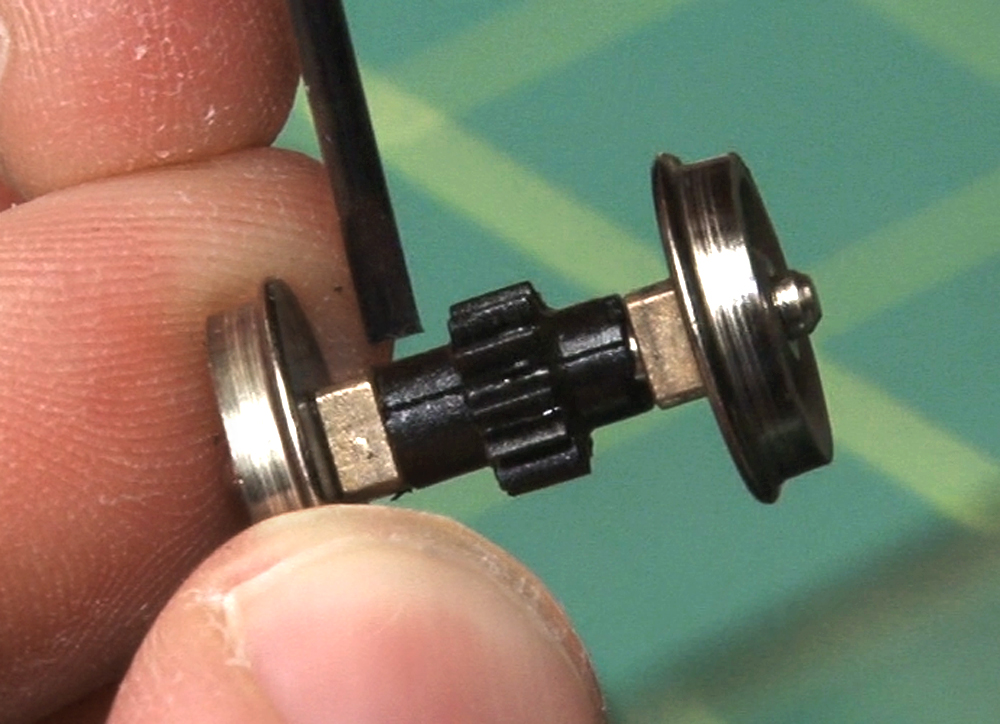




We’re not worthy!!
Superb layout! Lots of detail and the backdrops really help put you in the locations modeled. Operation sessions must be very enjoyable.
A+ to Hilton! The layout looks great, and the room creates a clean and comfortable environment for operating or just train watching.
WOW!! Just wow! Words do not do this justice.
I really like how you have modeled Echo Canyon and especially Curvo. I am planning to model Curvo myself. You’ve done a remarkable job. I live in the Salt Lake City area and Echo Canyon is my favorite train-watching place.